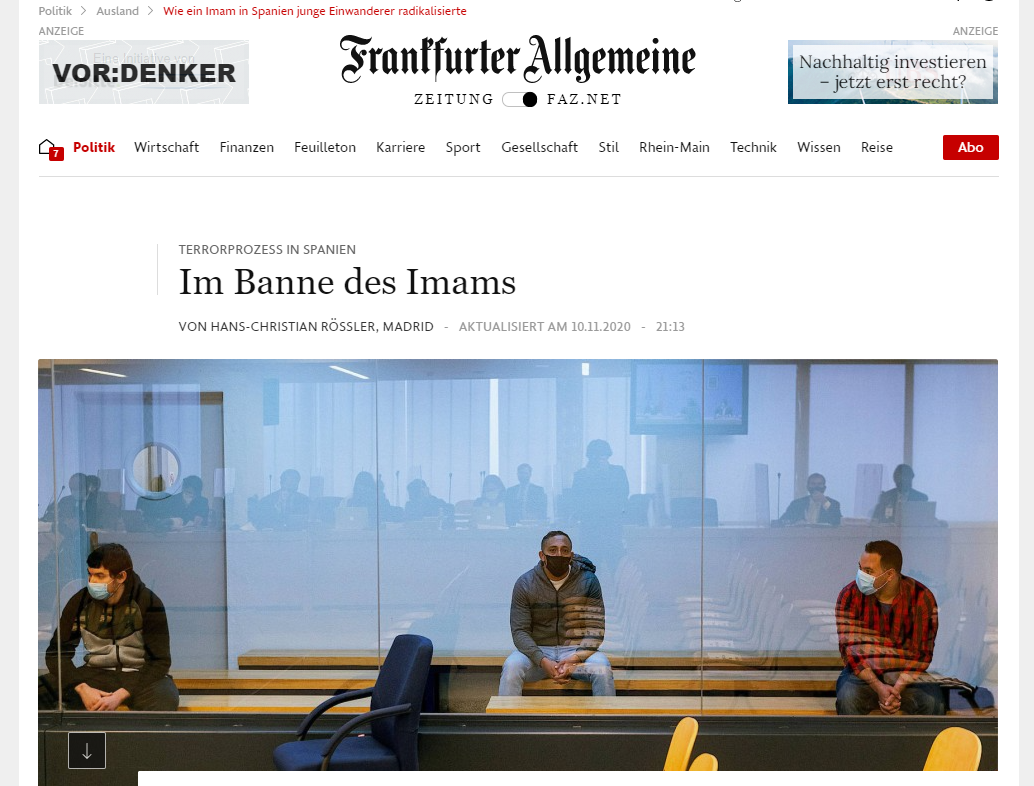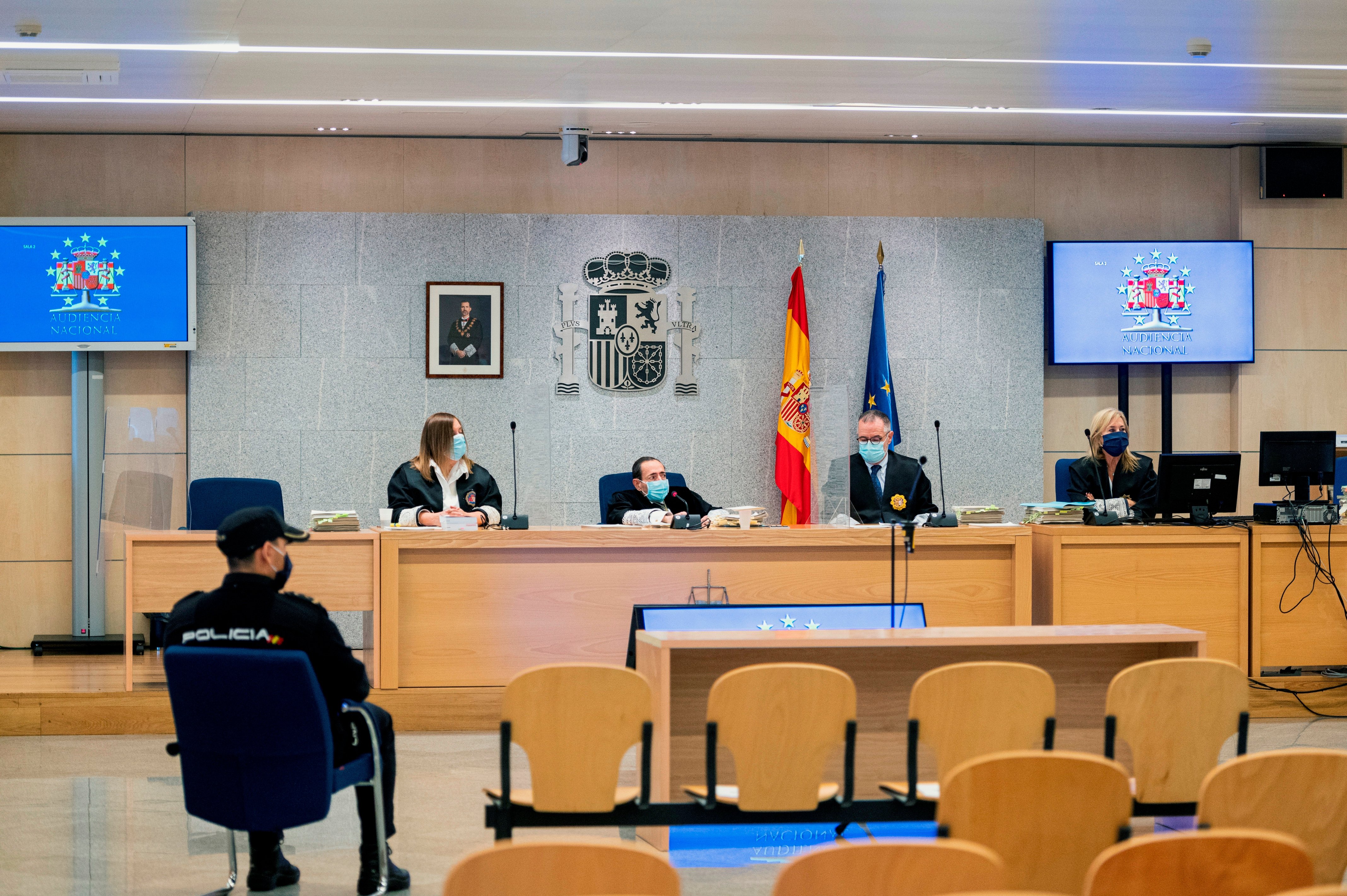Leading German newspaper Frankfurter Allgemeine has today published a report on the trial of suspects in the 2017 jihadist attacks on Barcelona and Cambrils - and its story is centred on the imam of Ripoll, the now-deceased terrorist leader who, as the newspaper states, was no stranger to either the Spanish police or the country's spy agency.
"The imam of Ripoll was no stranger to the CNI, the Spanish secret service, having had contacts with the agency for years. CNI agents as well as police visited him several times in prison, where he was incarcerated between 2010 and 2014 for drug smuggling, and where he became radicalized. In 2018, former CNI chief Félix Sanz admitted it had been a mistake not to monitor the imam," says the paper, in its report which is headlined "Under the spell of the imam."
According to the Frankfurter, the central theme of the trial is to clarify the imam's role, to find out what really happened. "It is hoped that the judicial process will shed more light on the imam who formed the group and radicalized it without its members realizing it, over a few months. Almost all the young members of the group were born in the small Catalan town of Ripoll, and some of them were children of Moroccan immigrants and had not even reached adult age. None of them had stood out previously as being especially religious or had tried to join the Daesh terrorist organization in the Middle East. Although the cell was anything but professional, investigators were unable to locate it until the explosives workshop blew up," he added.

"Under the spell of the Imam," headlines Frankfurter.
The newspaper states that Catalonia's autonomous Mossos d'Esquadra police had been monitoring the imam, without knowing that he was collaborating with Spain's CNI, but had lost contact with him when he went to live in Vilvoorde, then considered a jihadist focus in Belgium. The paper notes that the imam's and the group's ties to Morocco and France have not been clarified either. "The imam travelled regularly to his country of origin, and three of the terrorists were in Paris shortly before the attack. According to a Catalan police officer, the terror cell also considered the possibility of an attack on the Eiffel Tower" , says the report.
The head of the anti-terrorist unit of the Mossos d'Esquadra, testifying today in the second session of the trial, explained how the terrorist cell began preparing for the attacks three months beforehand. According to the investigators, on May 24th, 2017, they bought cell phone cards. On May 26th, during Ramadan, the so-called "big brothers" of the group proposed the attack to the younger members (some of whom were their younger brothers) and all the logistics machinery was set in motion.
Anti-terrorist unit head tells court: "By early June the group members were beginning to take specific actions related to how they were going to carry out the attack."
From June 9th to August 7th they bought all the precursor materials for the explosives: in total, 500 litres of acetone and 340 litres of hydrogen peroxide. Police found 91 different internet searches on cell phones relating to explosives.
According to searches made on mobile phones, three targets for the attacks were being considered: the Camp Nou football stadium and Sagrada Família temple in Barcelona, and as well, the Eiffel Tower.
The three men on trial, Mohamed Houli, Driss Oukabir and Saïd ben lazza, are alleged to have played different support roles in the attacks. All of those who actually carried out the 2017 attacks - which killed 16 and injured 140 more - were themselves shot dead by police.

